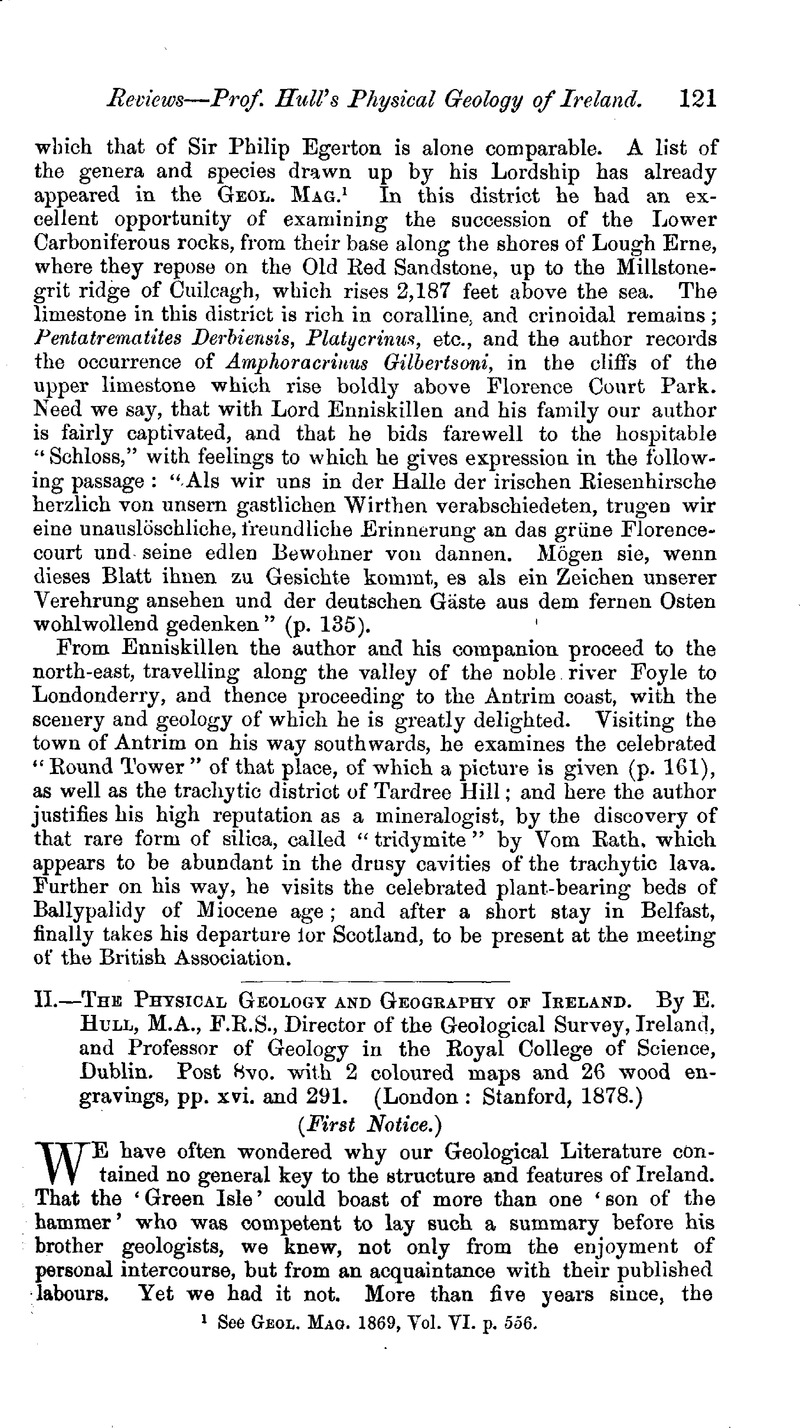No CrossRef data available.
Article contents
II.—The Physical Geology and Geography of Ireland. By E. Hull M.A., F.R.S., Director of the Geological Survey, Ireland, and Professor of Geology in the Royal College of Science, Dublin. Post 8vo. with 2 coloured maps and 26 wood engravings, pp. xvi. and 291. (London: Stanford, 1878.)
Published online by Cambridge University Press: 01 May 2009
Abstract

- Type
- Reviews
- Information
- Copyright
- Copyright © Cambridge University Press 1878
References
page 122 note 1 With this fullness and care, we notice also several things which convey to our mind a distinct impression that the work has been hastily written and too hastily printed. There are errors of grammar, errors and confusion in the spelling of names, and phrases and idioms which, though perhaps intelligible, are certainly not elegant, which a very little more care and time would have avoided. We notice these little defects at once, not as wishing to convey the idea that the real value of the work is diminished by such blemishes, but because we feel confident that a second edition will soon be called for, and we would gladly see even these little blots polished out.
page 125 note 1 Those who are curious to trace out accurately the successive steps by which opinions are formed, put forward and obtain currency, in such matters, will be amused to follow up this case of supposed ‘necks’ in the basaltic country of Antrim. Let them look first then to Portlock's Report on Londonderry, etc., 1843—more than thirty years since, and at p. 92 they will find a carefully drawn view of one of the instances referred to by Prof. Hull, and an equally carefully drawn up description of the appearances presented by the rocks. Portlock says: “The trap penetrates, into the chalk, and forms a conglomerate with the flints and fragments of chalk it
page 126 note 1 See Geol. Mag. Dec. 1876, p. 557.


